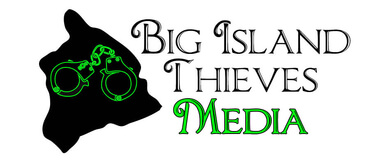(Kāne’ohe Bay, O‘ahu) – With a radio call…fire in the hole…repeated three times, U.S. Navy explosive experts detonated a military munition late this morning. The blast briefly sent a column of water an estimated 40-feet into the air. The munition was believed to be 50-years-old or older and was resting in the sand, in 13-feet of water, in the Sampan channel.
Dubbed “Operation Kāne’ohe Bay Response” by the Navy’s Mobile Diving and Salvage Unit One Detachment Explosive Ordnance Disposal (EOD), the bomb was detonated in place because it was considered dangerous because of the presence of armed fuses.
The second unexploded ordnance (UXO), described as a 1000-pound bomb, was unarmed. It was corroded and had extensive marine life growing on it. After setting underwater charges to take care of the first munition, the same Navy team brought the second bomb to the surface. It was towed to shore and lifted onto a flatbed truck for disposal at another site.
Today’s operation began with a briefing from the Navy’s EOD team and focused on maintaining a 2,100-foot circular perimeter to keep people safe and to allow the divers to do their work safely. The DLNR Division of Conservation and Resources Enforcement (DOCARE) deployed a boat and two jet skis and the Navy utilized two vessels to maintain the cordon. There were no instances of civilian boaters being in the area, prior to the UXO removal and for at least a half-hour afterward.
A biologist from the DLNR Division of Aquatic Resources, on the DOCARE boat, constantly scanned the water, as did wildlife watchers on the other vessels to ensure turtles were well out of the area. NOAA Fisheries and Hawai‘i Marine Animal Response had watchers on boats outside the security perimeter.
The DAR biologist, Ryan Jenkinson, noted at least two sea turtles swimming through the water almost immediately after the detonation, in addition to a tiger shark. There have been no reports of marine wildlife being harmed.
The Navy operation was done at the request of DLNR and DAR Administrator Brian Neilson commented, ”The Sampan channel is an important area for fishing, boating, and diving. We are glad that the Navy EOD was able to successfully remove these hazards from the area so these activities can safely continue.“
Hi‘ilei Kawelo, the director of Paepae o He’eia found the UXO while fishing with her family and reported it to DLNR.
She said, “As 8th generation residents of the Kahaluʻu and Kaʻalaea ahupuaʻa and fishers of Kāne’ohe Bay, we know full well the extensive military history in the area. So, itʻs not surprising that old military munitions and UXO exist on land and in the waters here. We were surprised however by the size of the munitions, measuring 4 feet in length, as well as their location, in the Sampan channel. Knowing the channel and a large amount of boat traffic and fishers that use the area, we thought it was important to bring the matter to the attention of DLNR as it’s a major safety concern.
Anyone who sees suspicious bomb-like objects in the water or on land should follow the three R’s of UXO safety:
· Recognize – when you may have encountered a munition and the potential danger
· Retreat – do not approach, touch, move or disturb it and carefully leave the area
· Report – call 911 or the DOH HEER Office at (808) 586-5815



